It somehow feels like an eternity and an instant since Arsen and I got married and went to Africa. Here we are in May 2024 for a whirlwind ten day trip to Portugal — a first for both of us. What would be the beginning of a travel log without a moment of reflection. Our first six months of newlyweds has brought its ups and downs — our second Thanksgiving, Christmas and New Year’s together, countless bike rides, a short-lived foray into gravel racing, Arsen’s first time skiing in Jackson Hole, a pregnancy and a miscarriage. I realized that my love for routine and control would need to surrender to the total lack of control and journey that is becoming a mother and then being a mother. There was still a detailed itinerary for this trip, so the surrendering is a work in progress.
Back to Portugal! We left Miami on a non-stop flight to Lisbon on Friday afternoon and landed at 5 am on Saturday morning. Within 45 minutes of landing, we had cleared customs, claimed our bikes from bag check and picked up our manual Hyundai i30 (Arsen’s way of ensuring that he is the only one to do the driving). We cruised out of the airport and through the narrow winding streets of Lisbon — I immediately asked Arsen if he felt like he was Jean Reno in Ronin. We stopped at Miradouro Portas do Sol to watch the sun rise over the Rio Tejo.
I was initially very worried about where we were going to park in a city center, prompting Arsen to ask me, “really, what goes on in your head?” We spent the morning exploring the Baixa, Barrio Alto, Chiado and Alfama — watching the weathered, bright yellow infamous trams hurl themselves around tight curves before anyone was even awake and even spotting a few locals on their way home from a night out.
We stopped for the first of many pasteis de nata at Castro and then brunch before driving to our hotel off of Avenida de Libertad (an old palace built in 1533!). After a quick nap and refreshing swim, we set back out to wander the city — purchasing an assortment of Portuguese canned fish (I can’t get enough of the packaging designs), azulejos, olive oil and matching Sambas. It started to rain and I found myself slipping on the polished white cobblestones that cover the city.
Before dinner, we popped into Toca da Raposa (which means The Fox’s Den) for a cocktail — I had one called the “T Rex” (mezcal, coriander, kimchi and pineapple) and Arsen got a Penicillin with garlic. This was easily the best cocktail I have ever had — the experience made even better by the Ukrainian bartender that struck up a conversation with Arsen. We walked to dinner at O Velho Eurico. When we came up to the tiny restaurant, there was a giant line around the block, as its doors promptly opened at 8 pm. The host yelled “reservas!!” (1 point for my planning) and we were seated along with two other tables. There were only about 7-8 tables inside and the walls were covered with writing, old azulejos and posters with a chalkboard menu.
The food was incredible and the ambience even better, with the combination of the food and boisterous atmosphere straight out an episode of No Reservations — the meal ended with waiters passing around a giant jug of grappa to every table. My favorite items were the pork empanadas, beef shank sandwich and celeriac and sprout salad.
Our second day in Lisbon began with a visit to the Ukrainian church because it was Orthodox Easter, more azulejos in the Museu Nacional do Azulejo, a ride to Belem to explore the waterfront (where Vasco da Gama departed to India from) and Mosteiro dos Jeronimos, pasteis de nata, a SECOND trip to Toca da Raposa and dinner in Principe Real at Pica Pau (which means “woodpecker” in Portuguese).
We regretfully missed lunch at Cervejaria Ramiro, a famous seafood restaurant, but the best laid plans often go awry (in the words of Robert Burns). I found Lisbon to be an enchanting city — European and modern, but somehow like stepping back in time, quirky and cool yet a little grimy like a port town, fascinated by the fonts and designs of the signs everywhere — somewhere between Baroque, Art Deco and Wes Anderson. I wish I had included one more day here.
This morning we went on an exploratory run north around Parque Eduardo VII and then down to Praca do Comercio before checking out of our hotel and driving to Sintra — a Romantic hilltop top about 30’ from Lisbon that was a summer retreat for Portuguese royalty, British writers and now, Madonna! If the streets in Lisbon were narrow, driving through these was something else and I am still wrapping my head around Arsen parallel parking our car on the side of one. We spent the morning visiting the Palacio Nacional (which dates back to King Joao (1385-1433)) sandwiched between two giant tour groups.
The highlights were really the kitchen, replete with white zellige tiles, two 33m tall chimneys and copper pots and the Hall of Magpies. The story goes that Dom Joao I had the ceiling painted with as many magpies as there were women at court, implying that they were all gossips after he was “allegedly” caught flirting/courting one of the female servants.
We also visited Quinta da Regaleira, the garish estate of Antonio Augusto Carvalho Monteiro before finally making our way to Cascais (pronounced cash-caysh) for a one night stay in this charming, seaside town at the Hotel Albatroz, which really has me thinking about 10th Grade British Lit and the Rime of the Ancient Mariner…
Musings
It really never occurred to me until now that after Bartholomeu Dias and Vasco da Gama, we never really heard about Portugal in World History class or otherwise — its rise and decline after accumulating untold riches and conquering everywhere from Brazil, India, the Persian Gulf and Macau is fascinating. Also news to me is that it was ruled by a virtual autocrat/dictator (Salazar) from 1932-1974, which explains why it feels a little like stepping back in time.
Tempura is actually not Japanese - but a style of cooking brought to Asia from Portugal by Vasco.
While I thought “azulejos” meant blue, it actually comes from the Arab word for “polished stone”. The painted tiles were originally brought to Portugal by the Moors. Whereas initial designs mirrored the Moor’s geometric shapes, the Portuguese gradually made them their own. The Catholic church and monarchy drove commissions through the 17th century, therefore most scenes were religious. In the 18th century, wealthy nobles began to decorate their homes with them and therefore more day-to-day scenes became common. Also, the tiles aren’t necessarily all white and blue — they can come in a variety of colors.
Sintra is said to be a center for cult worship — locals say batteries drain faster here and lightbulbs regularly burst — but who knows!
While I had a strong to very strong aversion to codfish as a kid (a Cuban favorite), I have to say the codfish cakes and baked cod with fries and egg have been two of my favorite dishes.
Pao pao, quiejo quiejo (bread bread, cheese cheese) is a Portuguese idiom for "what you see is what you get”.
Food, Shopping, Hotel Notes
We had two dinners: O Velho Eurico and Pica Pau and highly recommend both! Prado, O Maralvihas and Cafe de Sao Bento were also on our list.
For lunch we missed Cervejaria Ramiro and had brunch one day at Heim Cafe — cute but something out of current Instagram millenial design that you can find in any city. Dear Breakfast and A Panaderia Portuguesa seem to be local shops with good food for a quick bite.
We had excellent pasteis de nata at Castro and Manteigaria. I refused to wait in line at the famous Pasteis de Belem.
Some uniquely local shops were A Vida Portuguesa, Claus Porto (soaps and scents), Sapateria do Carmo and Embaixada.
We stayed at The One Palacio da Anunciada, which had a great location, service and I thought well-priced for the quality.





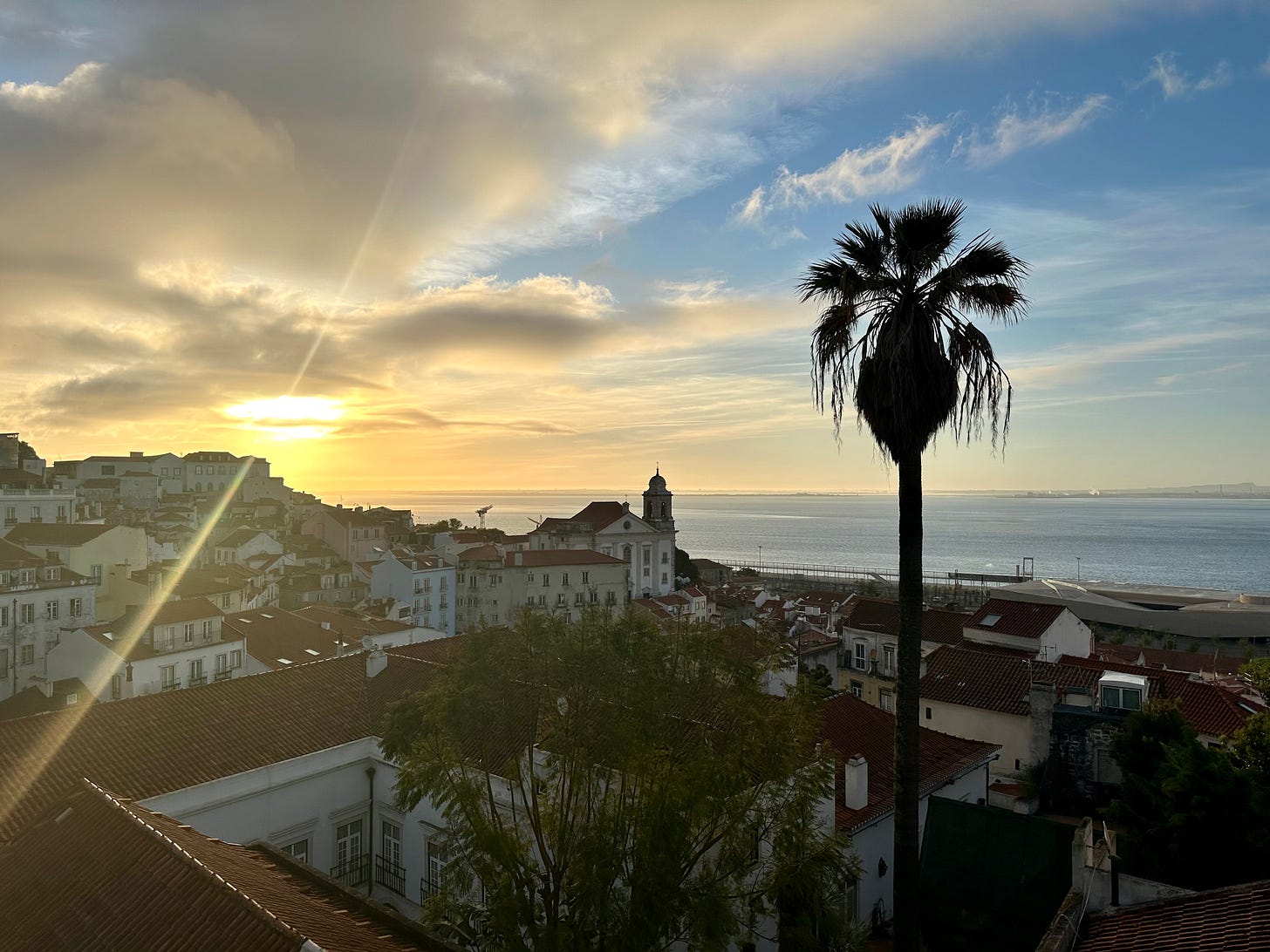
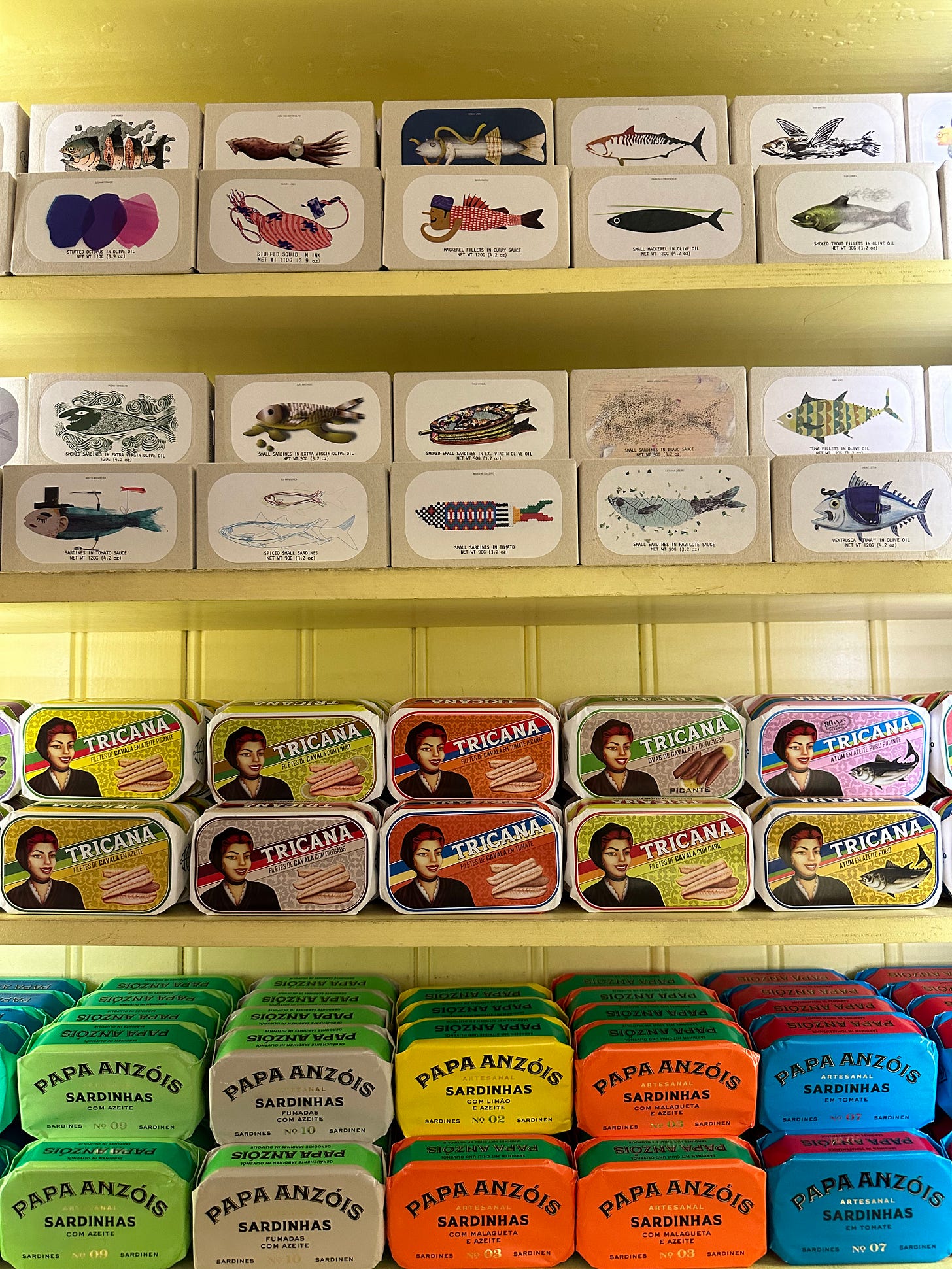
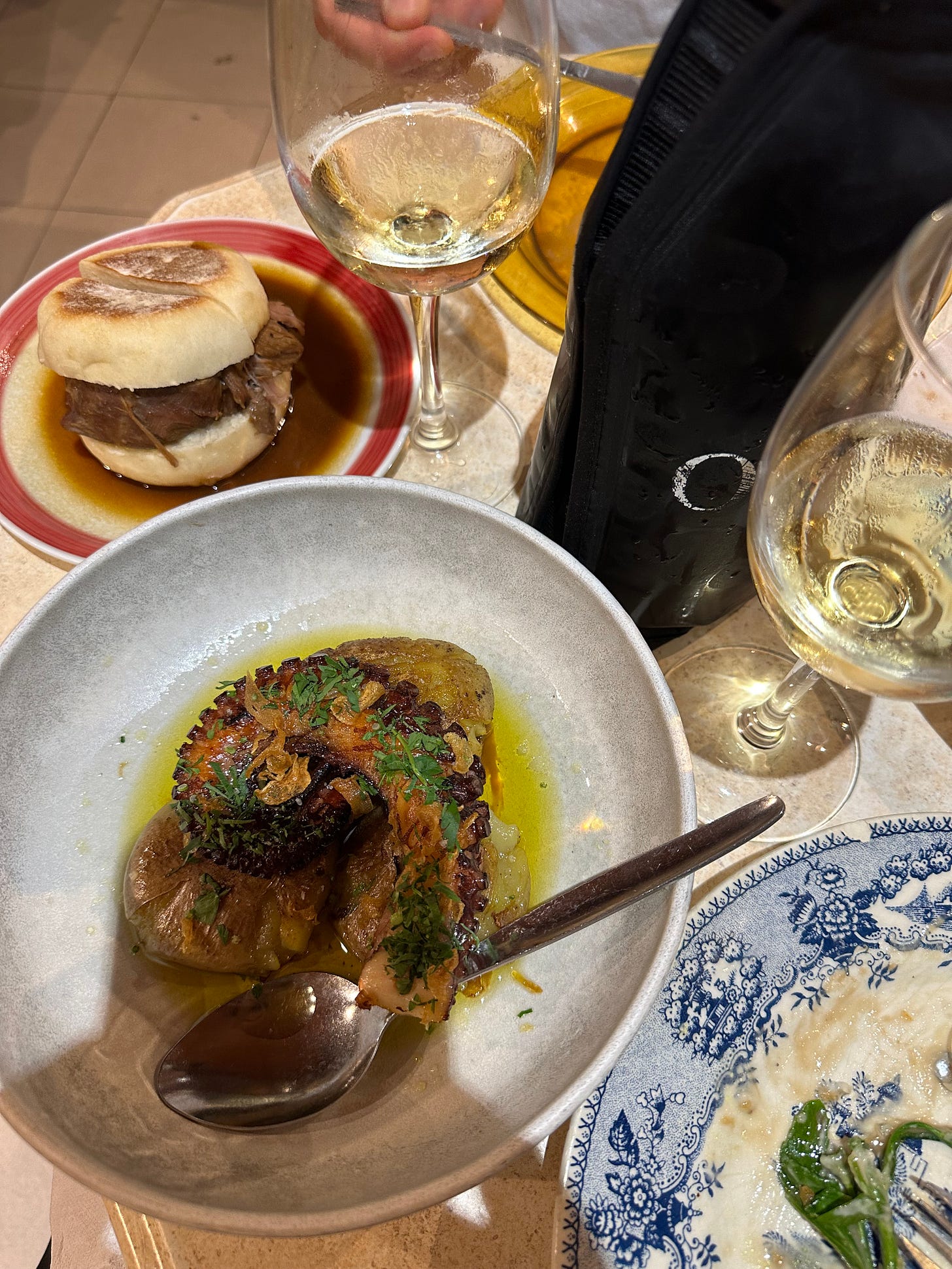
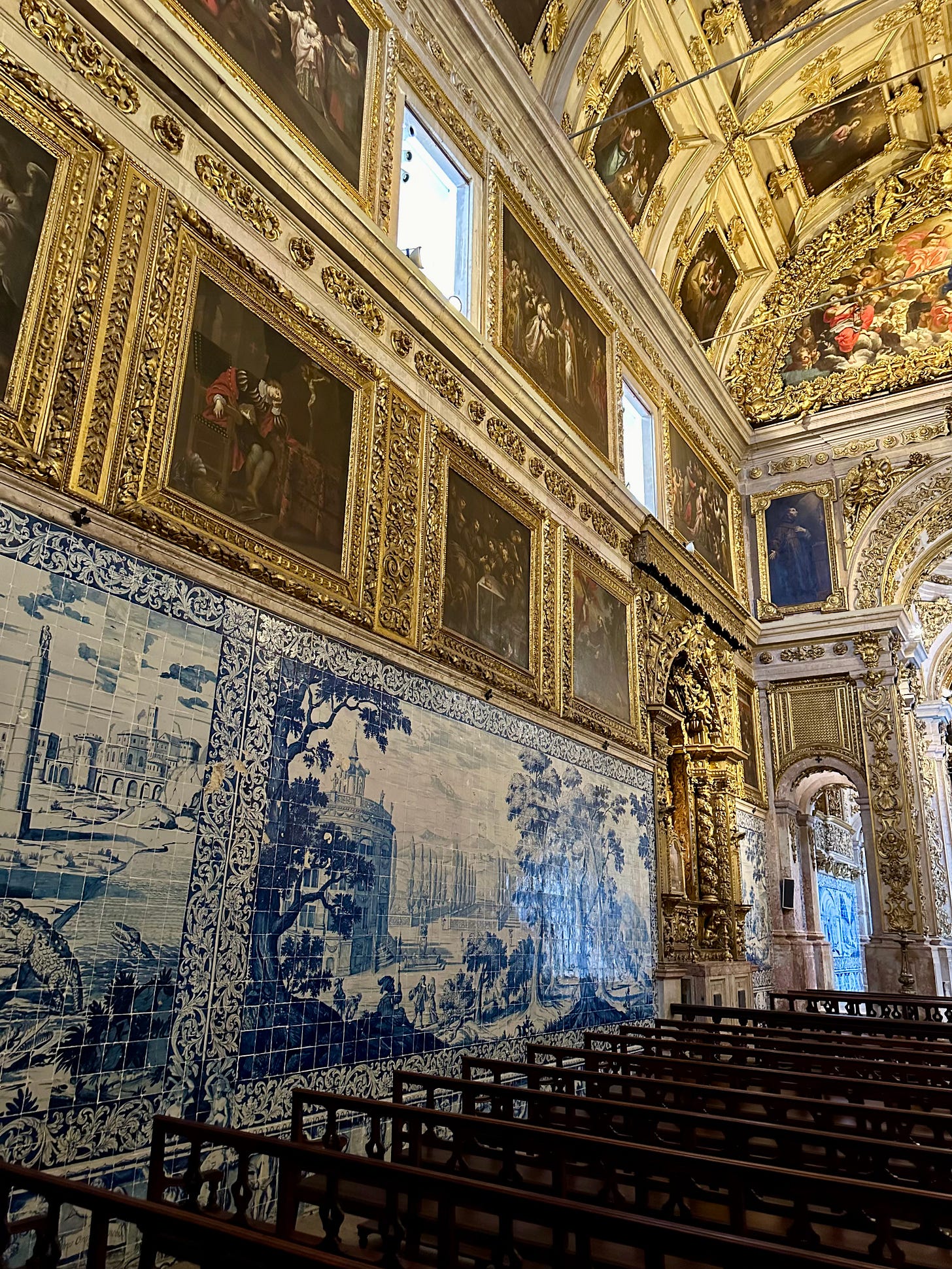


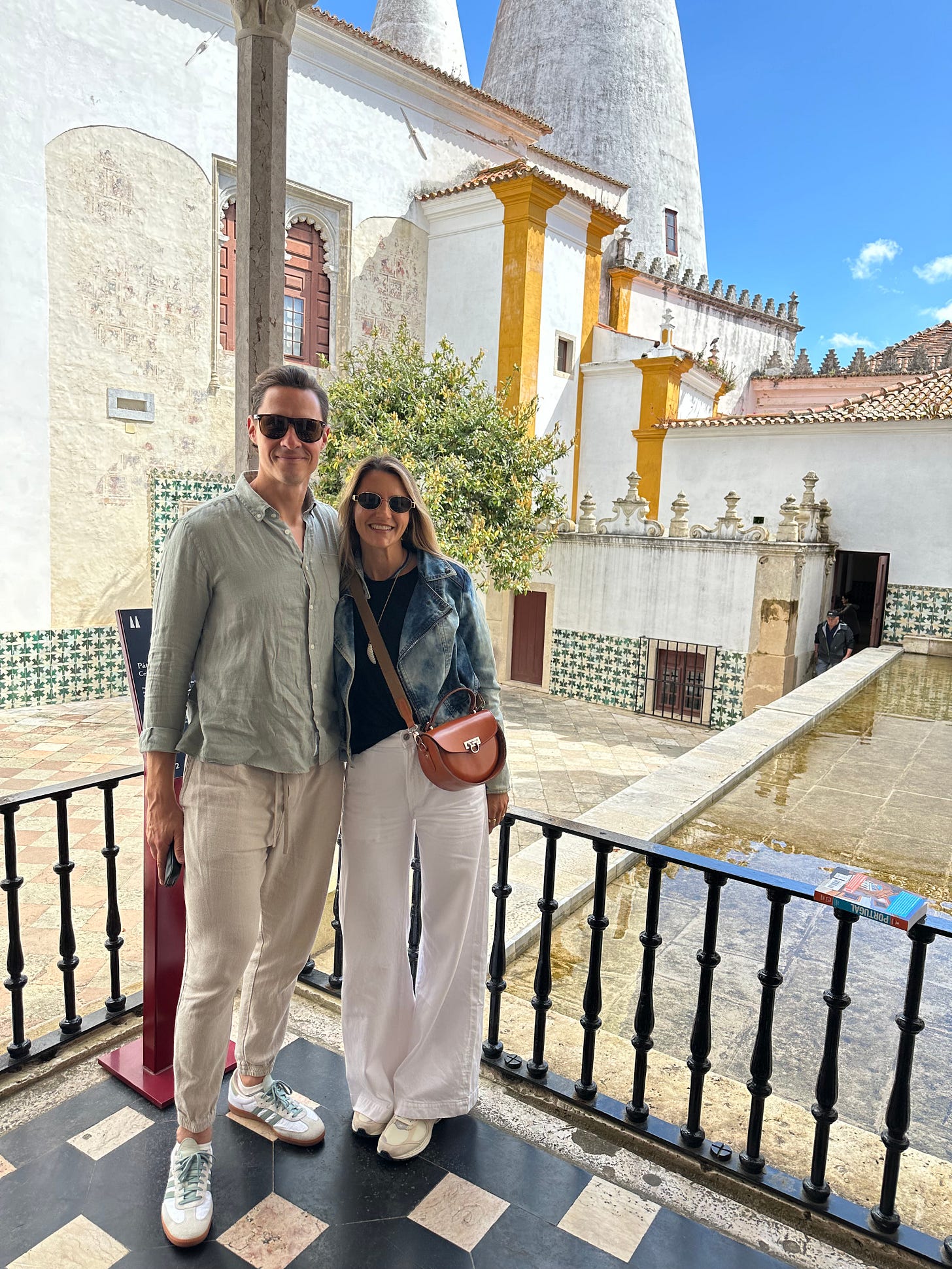
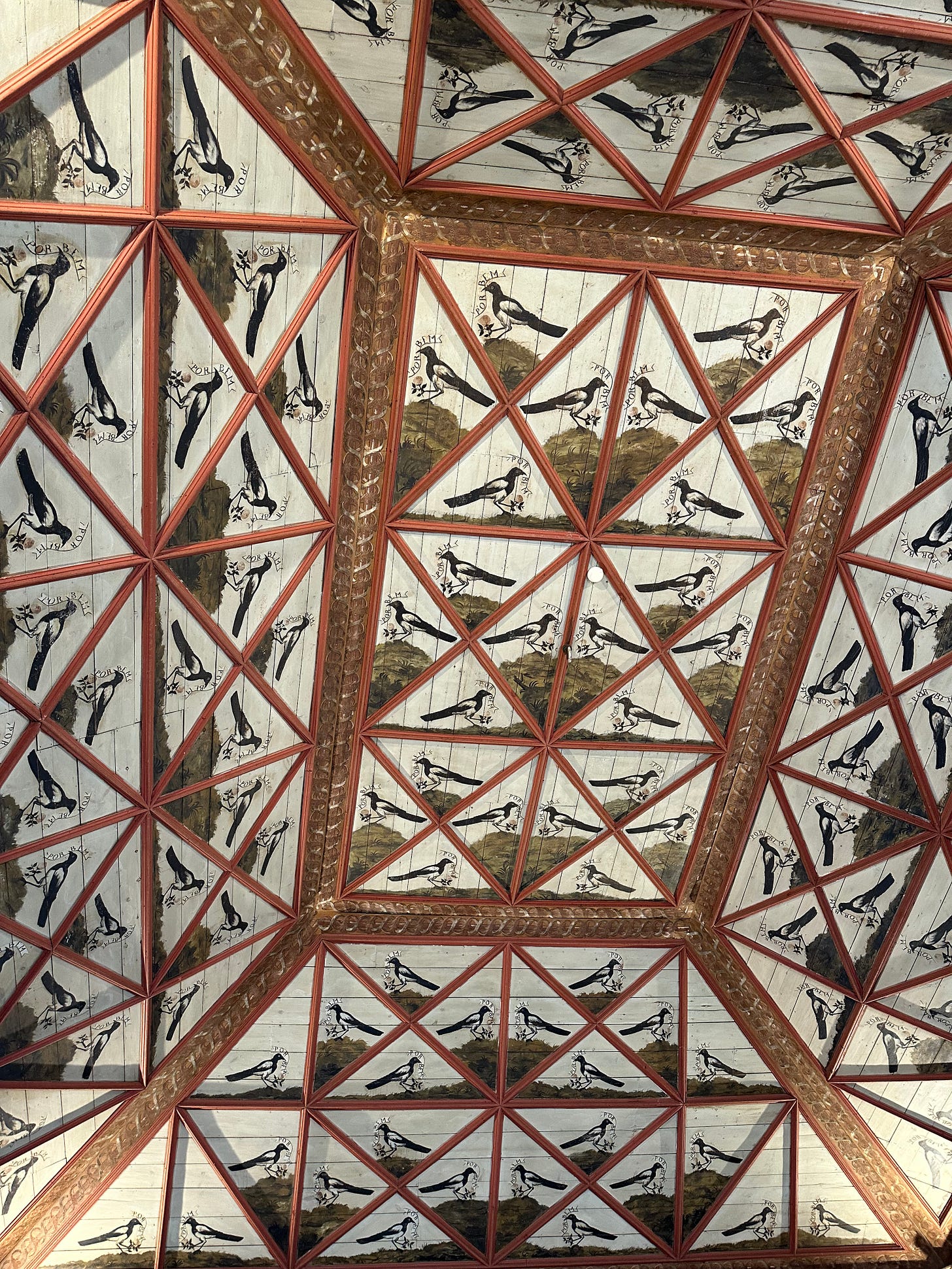
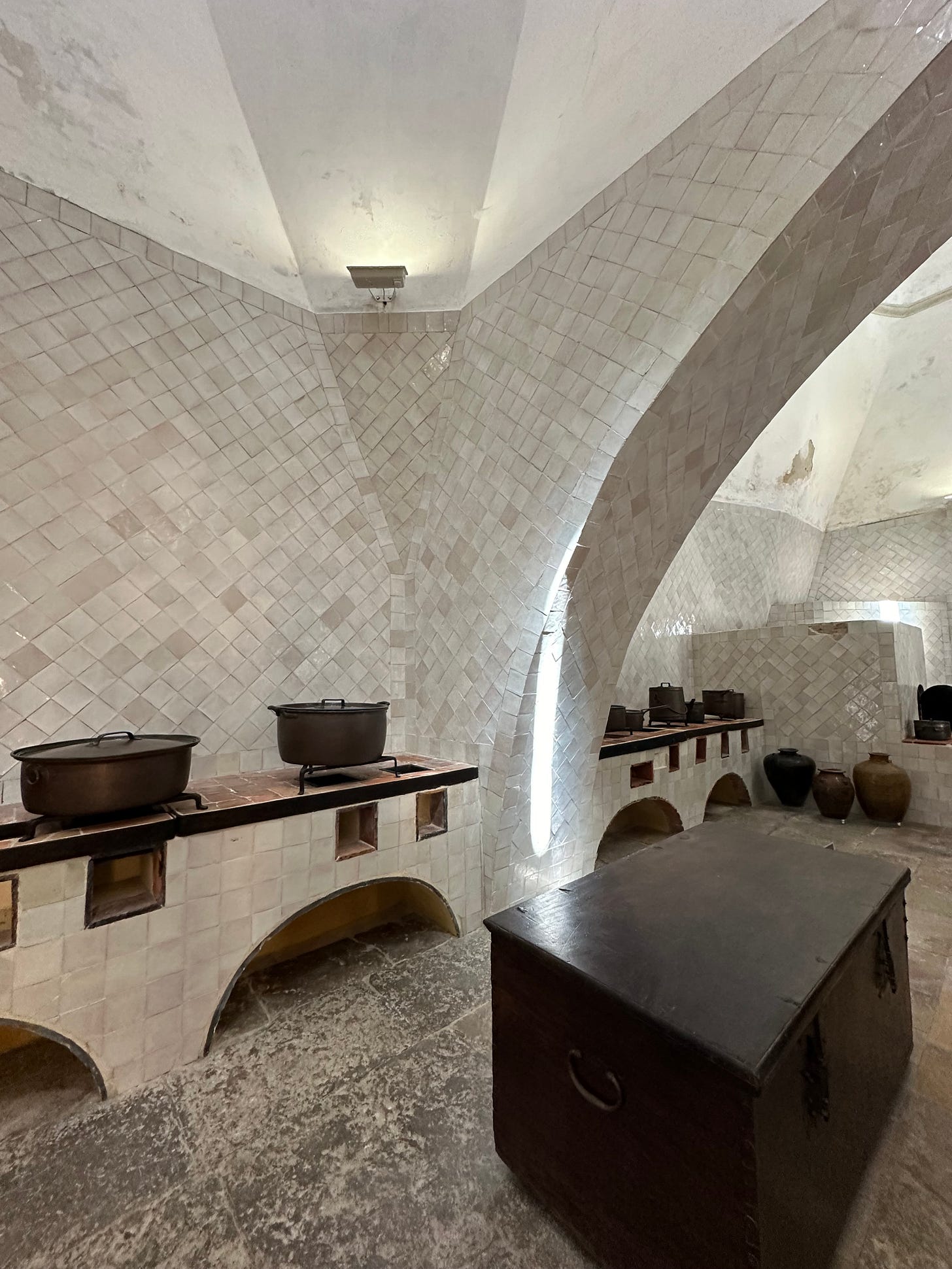
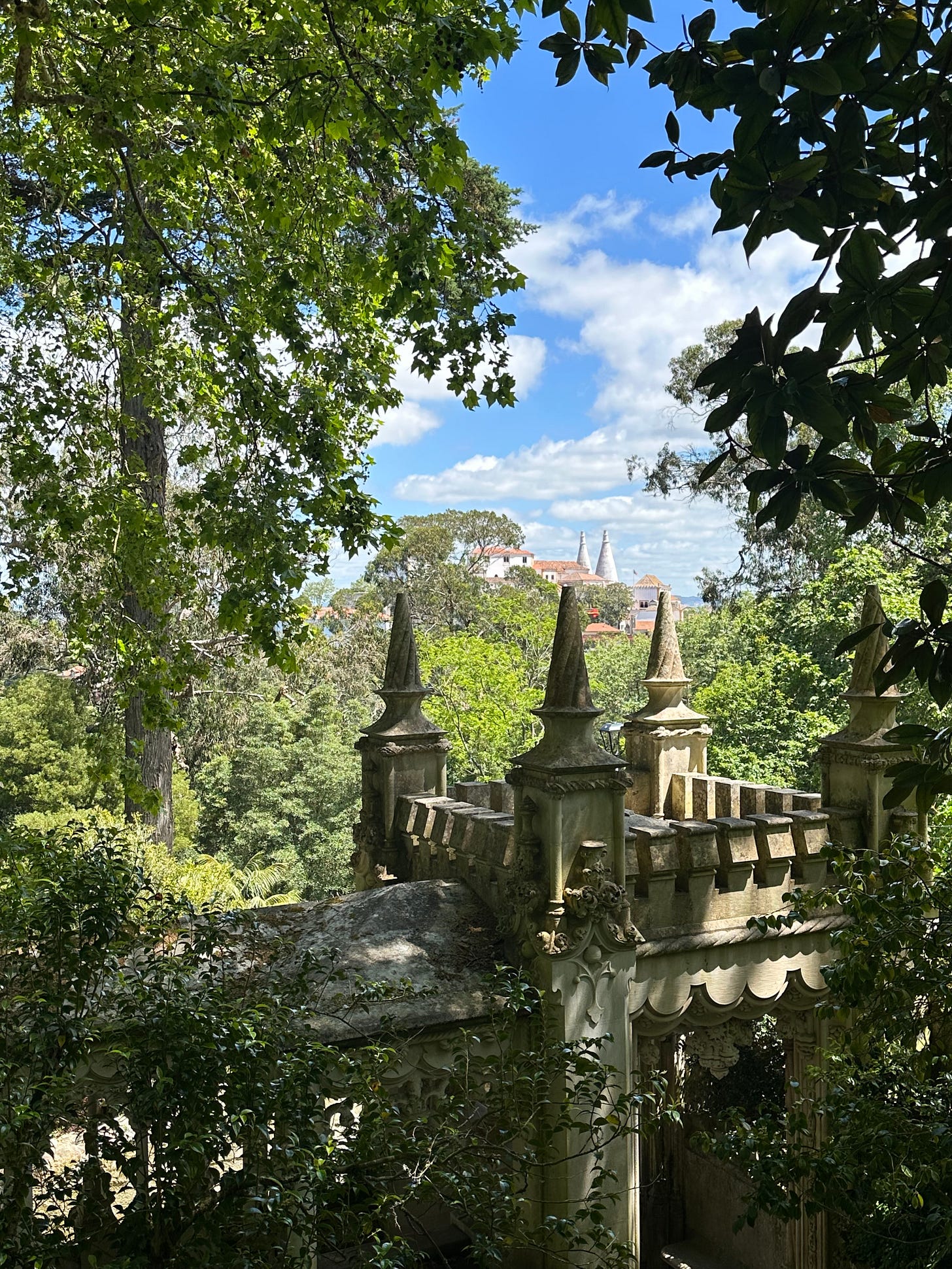
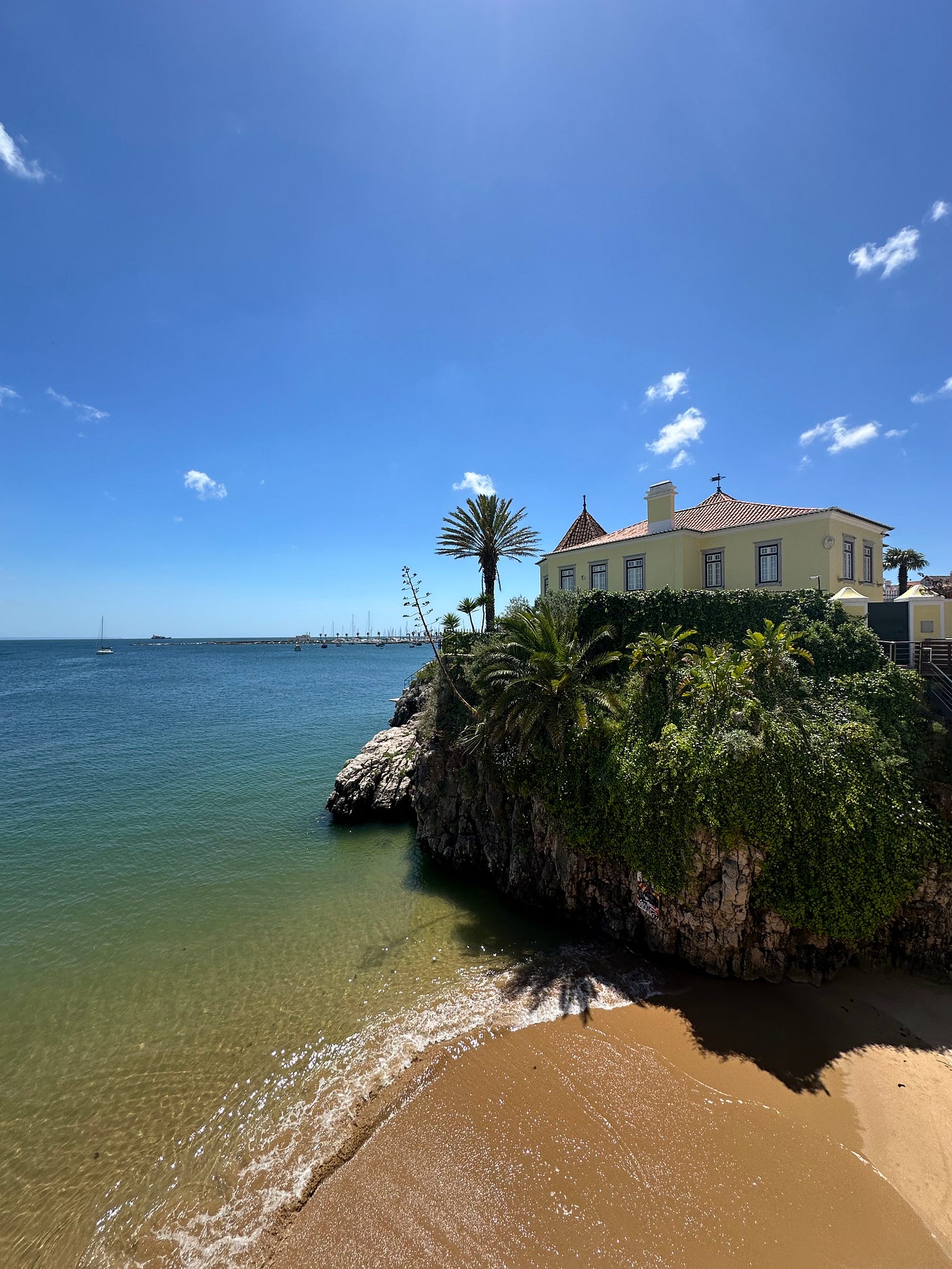
So many thoughts:
1. I want a t-Rex
2. How sassy was Dom Joa I?
3. I also got matching sambas to you and Arsen (in Rome, you need to update your post, lol)